DoJob AI Case Study
AI-driven SaaS Product Design for business development managers.
The project included a UX audit, design system creation, and platform redesign to deliver a user-friendly experience. The result is a streamlined, AI-driven application that efficiently supports users in creating high-quality, contextually relevant business documents.

Client Overview
My client, a Portugal-based entrepreneur, hired me via Upwork to redesign and enhance the user experience of their AI-powered SaaS application, DoJob AI.
The platform enables business development managers and owners to create and manage strategic and operational business documents by leveraging advanced AI agents.
These agents learn from user feedback to deliver contextually relevant, high-quality content tailored to specific business needs.
My Role:
- Redesign the user experience and user interface for the entire application, focusing on ease of use and functionality.
- Conduct a UX audit to identify usability problems and propose actionable solutions.
- Create a basic design system to ensure consistency across the platform.
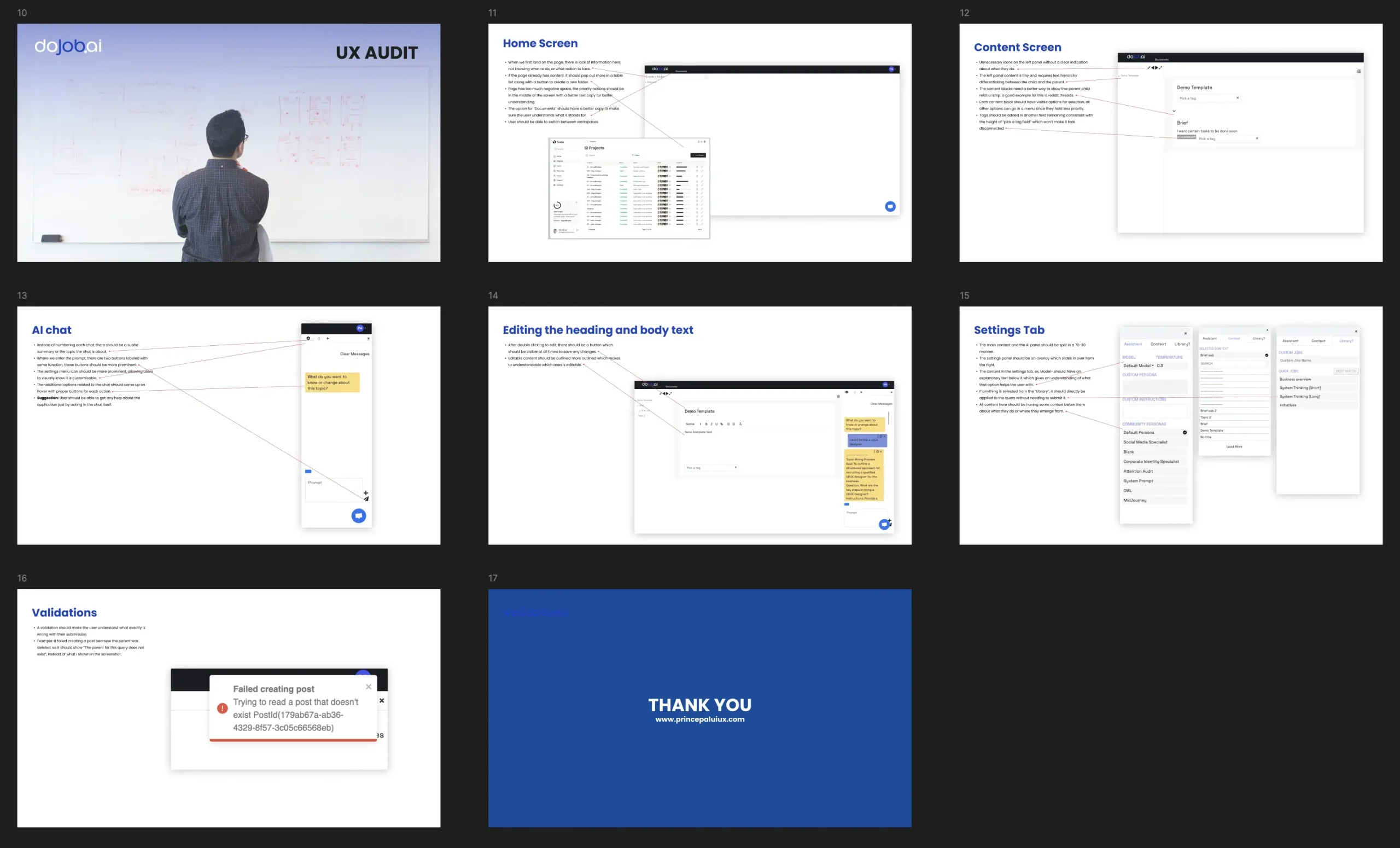
Phase 1: UX Audit
Identify existing usability issues and gaps in the DoJob AI platform to improve its user experience.
Process:
- Stakeholder Interviews: Discussed with the client to understand business goals, target users, and primary pain points.
- Heuristic Evaluation: Analyzed the platform using Jakob Nielsen’s 10 usability heuristics.
- User Feedback: Reviewed feedback from current users to identify common frustrations and desired features.
Findings:
- Navigation Issues: Users found the navigation structure unintuitive, leading to confusion about where to start and how to access specific features.
- Lack of Onboarding: The absence of a guided onboarding process caused new users to struggle to understand the value proposition and core functionalities.
- Inconsistent Design Patterns: The inconsistencies of typography, spacing, and button style created a fragmented experience.
- Complex Workflow: The workflow for creating and managing documents was overly complex, requiring multiple unnecessary steps.
Proposed Solutions:
- Redesign the navigation to follow a clear and logical hierarchy.
- Implement a guided onboarding flow for first-time users.
- Develop a cohesive design system to ensure consistency.
- Simplify workflows for document creation and management.

Phase 2: Competitor Analysis
Objective: Understand industry standards and identify opportunities for differentiation in the AI-powered SaaS space.
Process:
- Competitor Identification: Researched direct competitors offering AI-driven document creation and management tools like Jasper, Write Sonic, and Grammerly.
- Feature Benchmarking: Compared core features, usability, and design aesthetics of competing platforms.
- Strengths and Weaknesses Analysis: Evaluated what competitors excelled at and where they fell short.
- User Reviews: Analyzed user feedback on competitors to identify common pain points and unmet needs.
Findings:
- Strengths of Competitors:
- Clear onboarding processes with interactive tutorials.
- Highly visual dashboards with real-time analytics.
- Robust AI capabilities for document drafting.
- Weaknesses of Competitors:
- Overly complex interfaces with steep learning curves.
- Limited customization for workflows and document templates.
- Inconsistent user experience across different modules.
Opportunities for DoJob AI:
- Focus on simplicity and intuitiveness to reduce the learning curve.
- Provide customizable workflows to adapt to diverse business needs.
- Ensure a consistent and cohesive design across all platform modules.
- Leverage advanced AI features to offer real-time contextual assistance.
Implementation: The competitor analysis’s insights informed key design decisions, such as creating a user-friendly onboarding process, streamlining workflows, and enhancing the platform’s visual consistency.
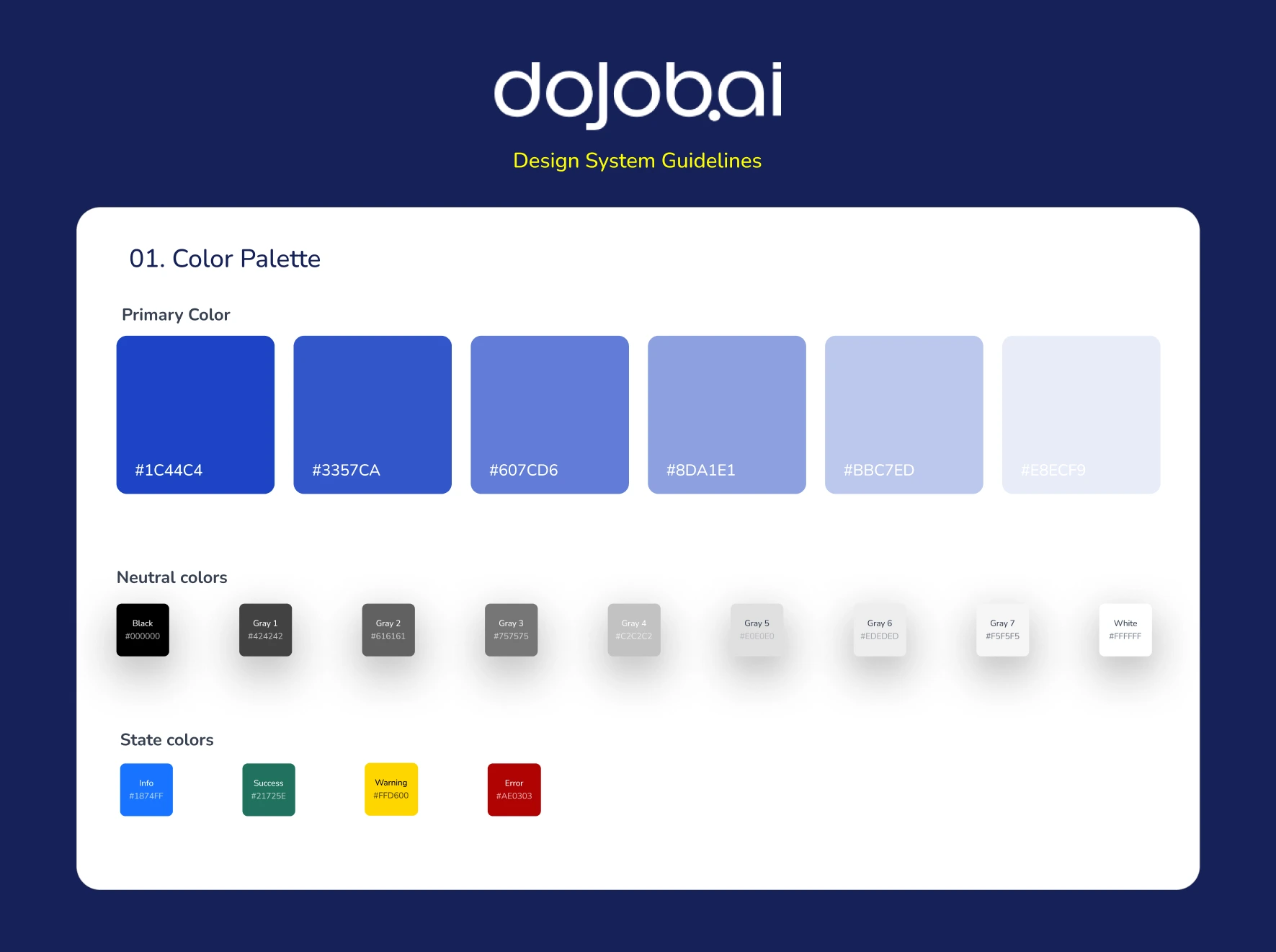
Phase 3: Design System Development
Establish a foundational design system to create a seamless and consistent user experience.
Components Created:
- Typography: Defined a hierarchy of fonts with appropriate sizes, weights, and line heights.
- Color Palette: For accessibility, choose a modern, professional color scheme with primary, secondary, and neutral tones.
- UI Elements: Designed buttons, input fields, dropdowns, modals, and cards with a consistent style.
- Grid System: Implemented an 8px grid to maintain spacing consistency across layouts.
- Icons and Illustrations: Selected a cohesive set of icons and created custom illustrations for onboarding and empty states.

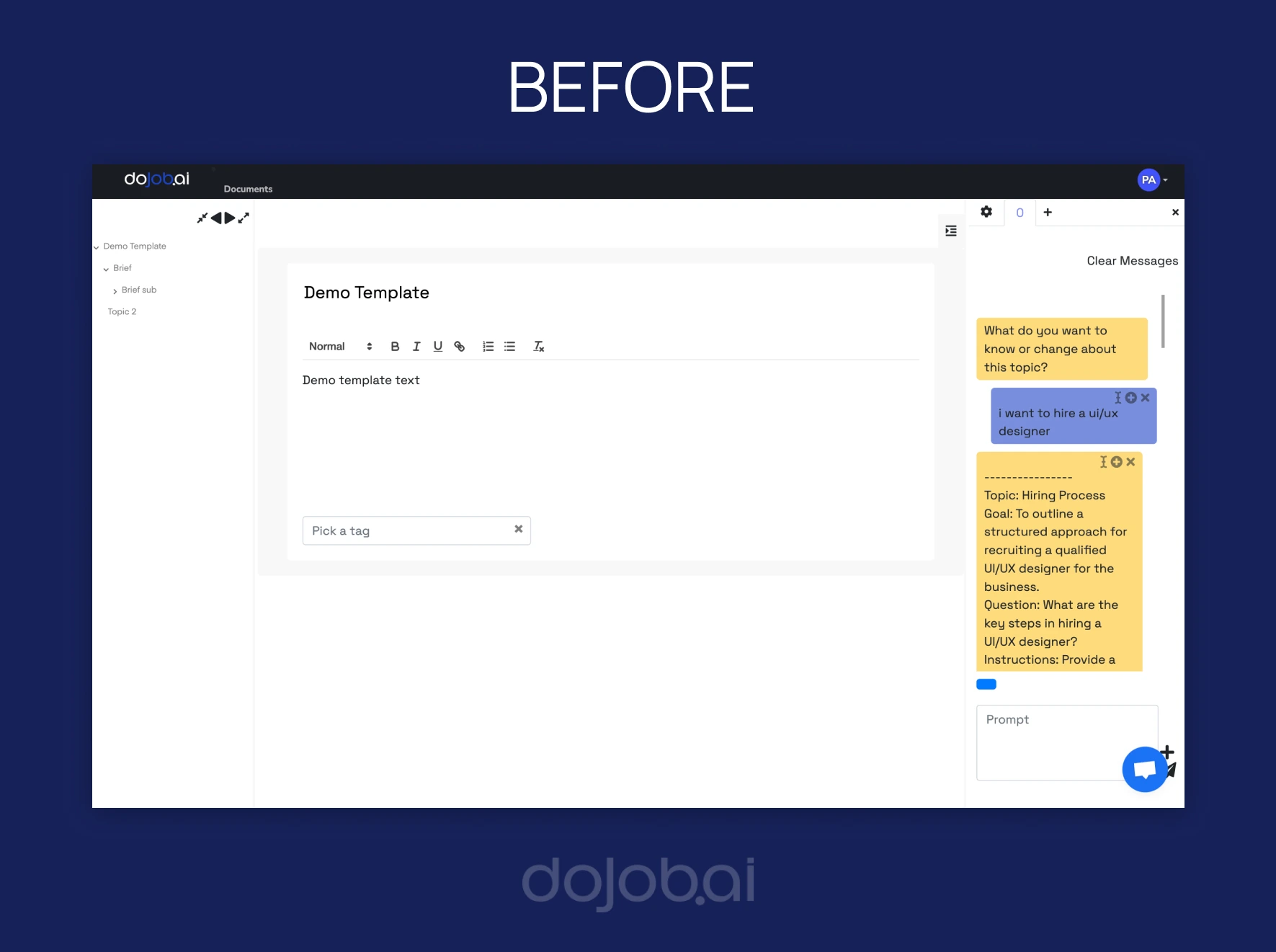
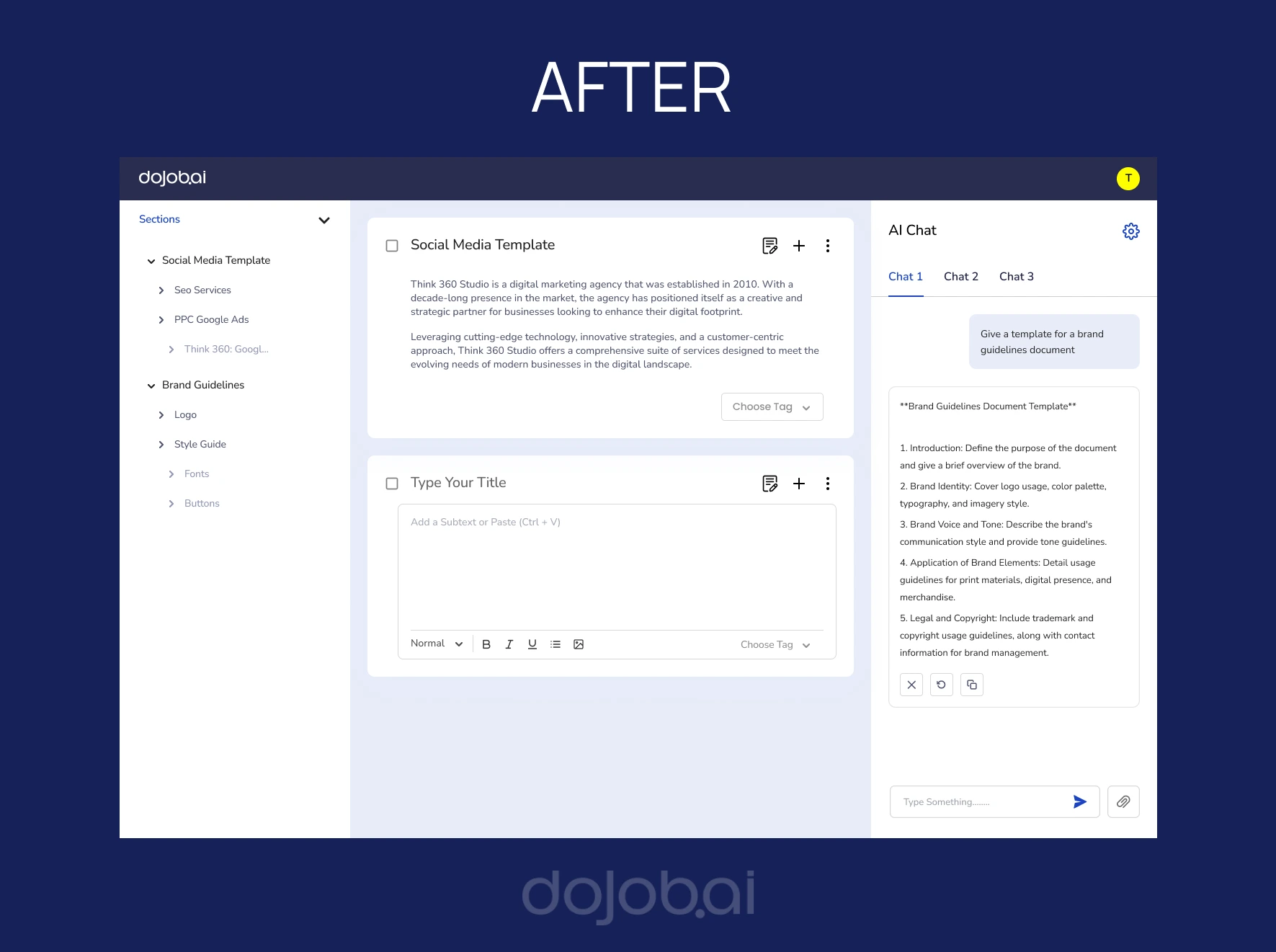
Phase 4: UX and UI Redesign
Objective: Redesign the platform to enhance usability, streamline workflows, and align with the new design system.
Key Features Designed:
- Knowledge Base Creation:
- Simplified the interface for building a business knowledge base.
- Included contextual tooltips and examples to guide users.
- Pre-Built Workflows:
- Designed a workflow library with filters and categories for easy selection.
- Added previews to help users choose the proper workflow.
- AI Agent Interaction:
- Created a conversational interface for interacting with AI agents.
- Added features for users to provide feedback directly within the chat, enabling the AI to learn and improve.
- Document Management:
- Streamlined the process of creating, editing, and organizing documents.
- Added collaborative tools for team input and approvals.
Key UI Enhancements:
- Dashboard: Redesigned the dashboard to highlight key actions and metrics, reducing cognitive load.
- Navigation: Implemented a sidebar with clear labels and icons for primary sections.
- Onboarding Flow: Designed an interactive onboarding experience that introduces users to core functionalities step-by-step.
- Accessibility: Ensured compliance with WCAG 2.1 guidelines, including proper contrast ratios, keyboard navigation, and screen reader support.
Dojob.ai Capabilities – A Generative AI for Strategy Alignment and Content Creation
- Knowledge Base Creation: Build a comprehensive repository of business information tailored to your needs.
- Workflow Selection: Choose from pre-built workflows designed to meet diverse business requirements.
- AI Agent Collaboration: Collaborate with AI agents that adapt to your feedback, ensuring tasks are completed efficiently and accurately.
- Strategic Document Management: Create, manage, and optimize business documents with the assistance of advanced AI, resulting in high-quality, contextually relevant content that aligns with your objectives.
✴︎ RESULTS
AND
Impact
– Success Metric
- Design Consistency: Achieved 100% adherence to the design system across all components.
- Time to Onboard: Reduced from 15 minutes to 5 minutes with the new guided flow.
- User Satisfaction Score: Increased by 40% based on post-launch surveys.
- Task Completion Rate: Improved by 30% due to streamlined workflows.
“Prince’s work on the UX audit, design system, and redesign of DoJob AI has exceeded our expectations. Our users are now able to interact with the platform more intuitively, and we’ve received overwhelmingly positive feedback since the launch.”

Rod Nunes
CEO, DoJob.ai
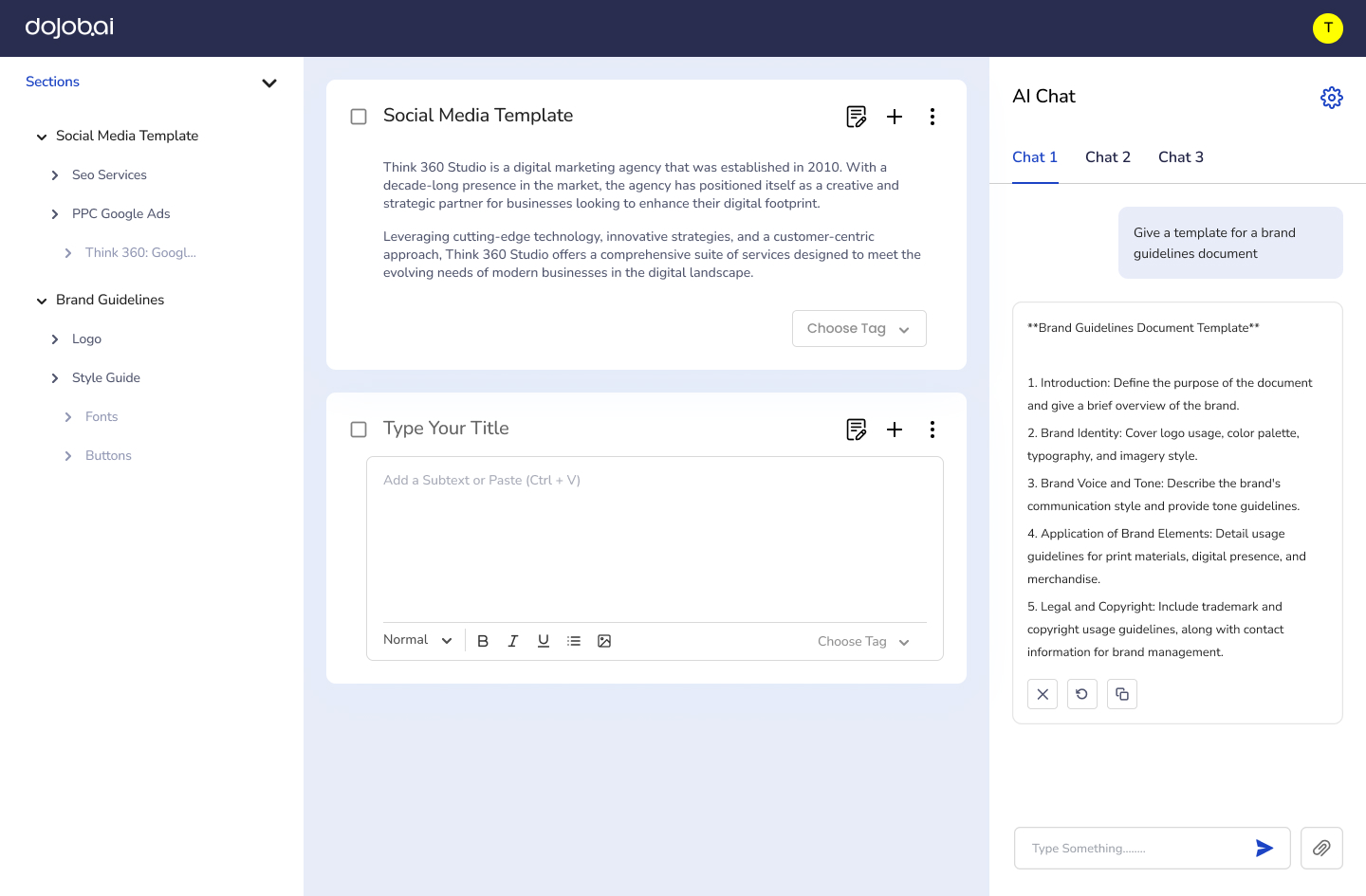
Challenges Faced:
- Balancing feature-rich functionality with simplicity.
- Ensuring AI interactions felt natural and intuitive.
- Managing tight deadlines while maintaining high-quality designs.
Lessons Learned:
- Thorough user research is critical for identifying pain points and creating effective solutions.
- A well-defined design system not only ensures consistency but also accelerates development.
- Iterative testing and feedback loops are essential for aligning the product with user needs.
Conclusion
The redesign of DoJob AI has transformed the platform into a user-friendly and efficient tool for business development managers and owners.
By addressing usability issues, creating a robust design system, and reimagining the user interface, we delivered a seamless experience that aligns with the client’s vision and user expectations.
This project underscores the value of a user-centered design approach in creating impactful SaaS products.